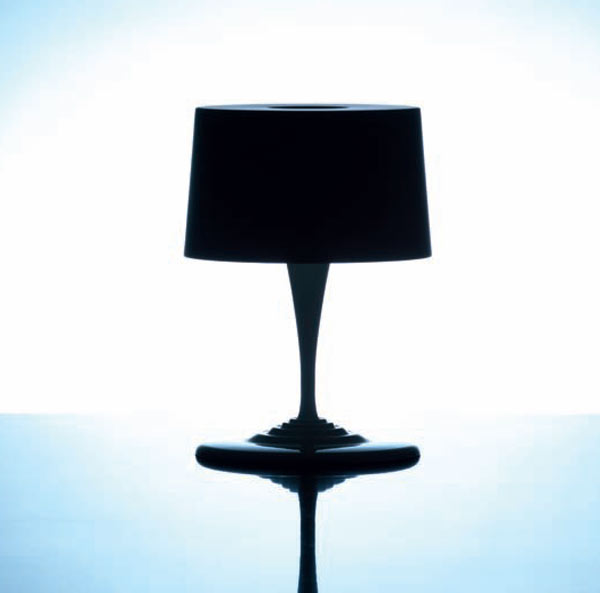A recent post from design blogger Abigail Ahern got us thinking about the matter of working from home, and how to carve out an office space for doing that.
Part of the appeal in working from home, after all, is that you very much aren't working from the office; you have control over how it looks.
Another part of the appeal is working in your pyjamas - and just like working in your PJs, the lighting is a huge part of the ergonomics of your workspace.
It's more than just a case of throwing more light into the room: a well-designed lighting scheme has been shown to have positive effects on satisfaction, motivation, and productivity.
Clearly, lighting your workspace is more than just making sure it is lit enough - the space should also be lit well.
There are four main factors to consider.
Natural Light
The first thing to do is get your desk (or easel, or whatever you use) as close as possible to a natural light source: exposure to natural daylight improves alertness, but obviously that's not possible all year round.Importantly, computer workers should watch out for glare! Eye strain is never comfortable Apartment Therapy has some tips for working with natural light.
Overhead Light
![When you hear "desk light" you might think "lamps" - and we're going to talk about those in a moment - but a ceiling light will illuminate those spaces outside the relatively small areas covered by the lamps. [in the picture: the Flos Glo-Ball ceiling lamp] When you hear "desk light" you might think "lamps" - and we're going to talk about those in a moment - but a ceiling light will illuminate those spaces outside the relatively small areas covered by the lamps. [in the picture: the Flos Glo-Ball ceiling lamp]](https://www.sparksdirect.co.uk/image/catalog/blog/2012/11/c9121-working-from-home-overhead-light.jpg)
When you hear "desk light" you might think "lamps" - and we're going to talk about those in a moment - but a ceiling light will illuminate those spaces outside the relatively small areas covered by the lamps.
It is probably advisable to connect the overhead light to a dimmer switch; a study of office environments (office-office, not home-office) found that access to a personal dimming control was a great predictor of worker satisfaction.
(However, it isn't clear whether that satisfaction came from the lighting levels or the feeling of control. Evaluating the research methods of lighting designers is a discussion for the comments section!)
If natural light is hard to come by, consider fitting a cool white bulb into the ceiling fixture: this shade of white approximates daylight, and has excellent colour rendition - which is great for artists, photographers, designers - anyone working with images.
Task Light
![Task lighting is used to direct the light towards a book, sheet of paper, or whatever it is you're working on, in order to reduce eyestrain and improve focus by spotlighting. [in the picture: the Artemide Tolomeo desk light] Task lighting is used to direct the light towards a book, sheet of paper, or whatever it is you're working on, in order to reduce eyestrain and improve focus by spotlighting. [in the picture: the Artemide Tolomeo desk light]](https://www.sparksdirect.co.uk/image/catalog/blog/2012/11/2d48f-working-from-home-task-light.jpg)
Task lighting is used to direct the light towards a book, sheet of paper, or whatever it is you're working on, in order to reduce eyestrain and improve focus by spotlighting.
An adjustable lamp is almost necessary for the purpose; that way, you can swing the light around as needed, rather than depending on a fixed light.
If there is a shelf above the desktop, another option might be to install some under-shelf lights (such as you might find in the kitchen).
Ambient Light

Apartment Therapy recommends using a soft light as a "stress reliever." We are inclined to agree with them; the constant glare of a computer monitor can be straining to the eye when there's nothing else around.
Ambient light can account for that: if you work with a computer, like many of us do, a small light - such as an X-Flex or an LED striplight - installed behind the monitor can be helpful.
Of course, there's always the option of a stylish table lamp - as if you needed another excuse to buy the excellently-named Chocolite by Toshitaka Nakamura.
These are just basic tips and tricks to set up a well-lit home office, but most importantly: don't be afraid to change it around if this setup isn't working for you!




